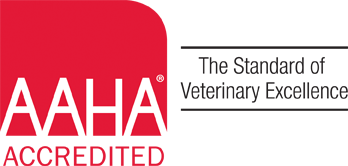Library
-
Diphenhydramine topical (brand name Benasoothe®) is an antihistamine with some local anesthetic properties. It is used to relieve itching and skin irritation in dogs, cats, and other animals. Diphenhydramine topical comes in a variety of forms, which may be specially compounded.
-
Diphenoxylate + atropine (brand name Lomotil) is an opioid combination medication used to treat diarrhea or coughing in dogs and diarrhea in cats. Its use in cats is not generally recommended. Diphenoxylate + atropine is given by mouth in the form of a tablet or liquid. This article discusses administration, potential side effects, risks, and monitoring.
-
Discoid lupus erythematosus (DLE), also known as cutaneous lupus erythematosus, is an autoimmune disease that causes the skin to crust and scab, usually starting around the nose, and often lose skin pigmentation in the affected area. If untreated, DLE can make dogs more likely to develop squamous cell carcinoma (a type of skin cancer).
-
Discospondylitis is a bacterial or fungal infection of the intervertebral disks and the adjacent vertebral bones. It primarily affects dogs, though rarely can affect cats. It affects large breed dogs more often and generally starts clinically as back pain. The diagnosis and treatment of this condition are outlined in this handout.
-
Dogs exhibit many normal behaviors that can seem unruly. Some dogs are overly active and never seem to settle. Attempts to stop disruptive, normal behaviors using corrections are not typically successful. Effective techniques rely on training desired responses instead. Sometimes, even when trained, dogs do not listen. This is usually due to a lack of understanding rather than deliberate disobedience. Retraining basic skills can be helpful.
-
Hip Dysplasia in Dogs
La displasia de cadera es una deformidad de la cadera que aparece durante el periodo de crecimiento. La articulación de la cadera está compuesta por una estructura esférica y otra cóncava. Evidentemente, tanto la parte esférica (la cabeza del fémur) como la cóncava (el
-
Distemper virus is a highly contagious disease that can affect multiple body systems and is potentially fatal. Puppies are most susceptible, and respiratory, gastrointestinal, or neurologic signs may be seen. Vaccines are available and are highly effective at preventing disease.
-
Distichiae can be an irritating eye problem for many dogs. The abnormally growing extra eyelashes can cause chronic discomfort to the eye and potential vision problems. A thorough eye examination is necessary to assess the extent of any accompanying corneal injury and to rule out other causes of the dog's clinical signs. Various treatment options are available. The prognosis is excellent for dogs that do not show any clinical signs associated with their distichiae. For dogs with mild clinical signs, the likelihood that the condition can be managed with conservative treatment is good.
-
DNA is a large, complex molecule that carries the genetic information or “code” of an organism. All common forms of life carry a copy of their own genetic code in each of their cells, and each organism has a unique section of DNA that is just like a fingerprint. DNA-PCR is often used to detect the presence of infectious organisms.
-
Dreaming is similar in dogs as it is in people and is a normal part of the rest period. Nightmares do not appear to be typical, but you can see different breathing patterns and some movement of the legs while your dog is dreaming.








